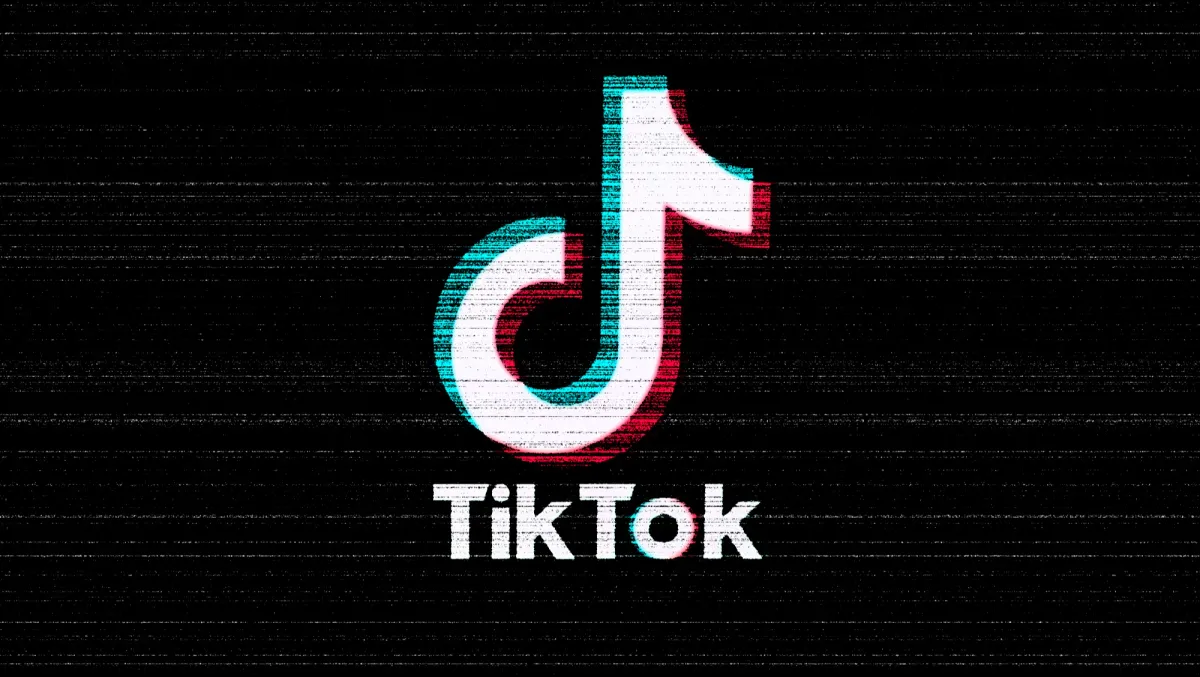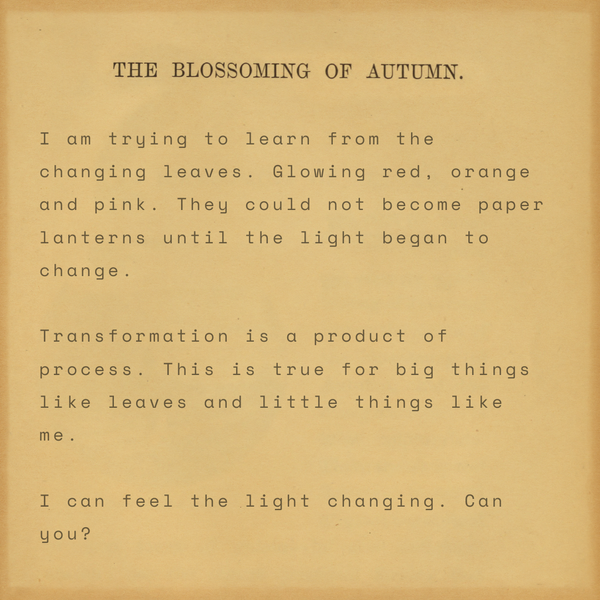Journalism Comes For Teenage Trauma and Triumph on TikTok
Internet culture has a kid consent problem

Originally published in Arc Digital
We’ve been grappling with questions about kids, consent, and internet culture since long before smartphones made social media something you could carry in your pocket. Those questions have only grown more complicated, and urgent, with TikTok’s emergence.
TikTok, an app with virality embedded in its design, came into prominence right as journalism’s interest in internet culture reached its highest point. And now, as the bright lines between the online and offline worlds continue to fade, the boundaries our gatekeepers raise up around young people, or altogether remove from their paths, will to some meaningful degree determine what kind of society we will have.

A video sharing platform with 800 million users worldwide, TikTok is a rare piece of social media that seems, initially at least, to be made for joy. Users share short videos of themselves being just genuinely hilarious, dancing, lip syncing. Followers react in real time with emojis, comments, and video replies. TikTok seems at first like a place of pure spontaneous creation.
But the longer I used the app the more I came to understand it as an experiment in spontaneous collaboration. In a world as unraveled as ours, it’s kind of beautiful to watch people weave together. It’s not just the collaboration that feels unique, it’s also the apparent access. When every creative industry is so fiercely guarded by connected gatekeepers — many of whom are older white men — TikTok seems to democratize both creative expression and consumption. Really it’s just installed a new gatekeeper — an algorithm whose only concern with connections are the ones it is forming with its users.
You don’t have to be under 18 to use TikTok, but it helps to be under 18 if you want to be successful on TikTok. The most followed account on TikTok belongs to Charli D’Amelio, a 16 year old with 74.8 million followers. The kids are good at TikTok because the kids are good. I’ve got two Gen Zers living in my house and I am constantly amazed at their ability to create in a collective, confront difficult issues, and just generally live life at a frequency I am just now learning to hear clearly. Of course kids can make 15-second bursts of beauty and fun. I witness my own living the rest of their minutes, hours, and days the same way.
TikTok isn’t just a song-strewn collaborative creation dome, it is also a content farm. The content is driven by individual creativity, but it is also driven by trends, viral memes, influencer culture, the kind of in-language every social media platform develops, and big advertising dollars. Like most social media, it is difficult to parse where autonomous user expression ends and orchestrated business begins.
Owned by Beijing-based Bytedance, TikTok is very much a business — with an estimated private valuation of $50 billion, every controversy that attends most tech companies, and a soupcon of possible Chinese Communist Party interference. Influence, money, and geopolitical intrigue is a mix that makes TikTok, and the people who use it, news. But what happens when the people who make that news are kids?

When I want to know how journalism should be done, I look to the “newspaper of record” — partly because I respect it as an institution, partly because the New York Times “About” page on their YouTube channel tells me they “set the standard” in journalism. (If I’ve learned anything from my years on the internet, it’s that About pages never lie.) Taylor Lorenz is the New York Times reporter assigned to the internet culture beat. Formerly with The Atlantic and a recent Harvard Nieman fellow, Lorenz writes stories about sexism in the gaming world and the monetization of Instagram influencing. Her deep-dive into the “viral world of hyper-realistic cake slicing videos” is a recent favorite of mine. She also writes about kids and what they do on the internet.
To report on kids, you’ve got to talk to kids. And if you’re a stranger, it’s hard to get kids to talk to you. Although, I suspect, it’s a little less difficult when you are a New York Times reporter. In a recent interview with Digiday, Lorenz said she meets teen influencers by commenting “lol” and “oh cool” on the “For You” TikTok page. She said being a woman makes it easier to “slide into these people’s DMs in a non-threatening way than from a male journalist in his 30s kind of DMing random teen girls. So I definitely use that to my advantage.” Lorenz stressed that she always lets teenagers know she is a journalist.
Journalists should be talking to kids. Deeply reported pieces on children aren’t just newsworthy, they are necessary. Kids need the voice of the press speaking up on their behalf because they are, by nature of their kid-ness, a disempowered group. Their stories and needs are important and reporting on them helps influence politics, policy, and the people who run their daily lives.
The Columbia Journalism Review cites “a New York Times report, about standardized testing seen through a Brooklyn fourth-grader’s eyes” as an article that was able to “successfully incorporate the voices of children into complex political stories.” In a UNICEF document on media ethics and children, there are guidelines for reporting on children in war-torn countries, children who have been the victim of a crime, children who have faced discrimination. There are no guidelines for what child-generated social media content constitutes news.
Should journalists only report on teens when it’s about something cool and compelling like the Renegade? Or does the newsworthiness of the underaged extend further? What about 15 year olds with offensive TikToks?
When I think of how self-hating I was as a girl and some of the incredibly retrograde ideas I had when it came to women, I can imagine recording a TikTok at 15 that would have become first a trending item and then a reported item because I was considered: fair game, topical, an example of toxic teen culture. In the years that followed the seemingly eternal nature of online reporting would have hobbled me as I struggled to become better and move on.
I feel empathy for reporters navigating the colliding landscapes of social media, kids, and consent. There’s no clear way to regulate access to kids who are always accessible. Still. I am wary of adults loling on kids TikTok posts as a means to establish contact. I have some concern over normalizing adults befriending teens on social media. As a former teen victim of online abuse at the hands of an adult, I wonder how we can help kids tell the difference between an above board professional doing due diligence and someone with ill-intentions.
Lorenz is right, as a parent I would find a woman DMing my daughters less concerning than a man DMing my daughters. I question the wisdom of reinforcing to children that women who are in power — and writing for The New York Times is a position of immense power — are inherently safe. Power is coercive no matter who wields it, even when we don’t mean for it to be.
In a recent Q&A with the Times, Lorenz said that most of the teens she writes about have managers. While she may initially DM the teen, she sets up interviews with them through a “manager, agent, or PR representative.” Influencing is a multi-billion dollar industry and the talent teams can be extensive. (Whether or not it is an indictment of the grand capitalist experiment that a child can make money by broadcasting dances from their bedroom is up to the reader.) At one point during the Q&A, Lorenz is asked, “Do you think teens are thinking about their Google results or what it means to be in The Times?”
Oh yes. … Young people are hyper aware of their digital footprint from a very, very young age. Often, they know that any story written about them could be the most prominent (or Google-able) information about them for years to come.
Of course, her response is unsettling to anyone who understands the difficulty of being followed from job interview to job interview by an unwelcome Google result.
But it is also untrue.
No matter how precocious or performative they are, children, tweens, and teens are not equipped to understand what a permanent record on Google may mean for them in the “years to come.” How can children consent to what they cannot comprehend? And what happens when they give consent without the advice of a management team?
When Claudia Conway Googles her name in the years to come, there will be a series of tweets written by Taylor Lorenz and news articles about her “leftist TikTok,” a Twitter spat she had with her dad, and a video of Claudia and her mother fighting over a smartphone.
I didn’t know George Conway and Kellyanne Conway bred anything other than discord until Lorenz shared their 15-year-old daughter’s TikTok videos on Twitter. Lorenz’s tweets were liked over 43,000 times. When people on Twitter expressed concern about the extensive coverage, she replied that she and Claudia “had literally talked” and were “mutuals.”
Lorenz found the left-leaning TikTok declarations of the daughter of the embattled and embittered conservative couple newsworthy and kept tweeting.
Many news outlets agreed with her. Elle, People, Teen Vogue, and The New York Post ran stories on the 15 year old in the days after Lorenz’s Twitter thread. Insider and USA Today interviewed Claudia. According to USA Today, Claudia Conway had been posting videos to a small following since TikTok was known as Musical.ly — at least three years. The day after Lorenz’s tweets, Claudia had 40,000 followers. After a few weeks of news coverage, she has over 250,000 followers. One of Claudia’s TikToks is a close up of her face; she is crying, mascara streaks down her cheeks. She looks much younger without makeup.
Outside of Lorenz’s tweets, Claudia’s face is absent in most of the coverage. Teen Vogue, Elle, and People all used images of George and Kellyanne in their stories about her. There is, perhaps, something about reporting on the TikTok antics of a 15 year old that just feels a little intrusive. “Claudia Conway Isn’t a Liberal Hero. She’s a Normal Teenager,” one of the few articles skeptical of the media maelstrom, came from Slate writer Christina Cauterucci. You can almost hear Cauterucci shake her head in bewilderment as she writes, “The impulse to valorize a teenager for antagonizing her parents with her political views — something teenagers have done since the dawn of time — is both strange and sad.”
One outlet seemed to feel a bit of squeamish about their coverage. People Magazine included an Editor’s Note to their article about the 15 year old. The note justified the original article because when it was published Claudia had “reportedly given multiple interviews with her father’s permission” and George Conway had “humorously interacted” with Claudia’s Twitter account.
As a mother who likes to joke with her kids, I am a bit concerned that reporting standards now apparently include “if a parent jokes with a child online, said child’s online presence is now fair game.” On July 3rd, Claudia and her mom fought over her possession of Claudia’s phone on a TikTok live.
In a tweet later that day, when George Conway instructed journalists to stay away from his daughter, Claudia replied on twitter, “You’re just mad that I’m finally getting my voice heard. Sorry your marriage failed, 💅🏼”
Taylor Lorenz tweeted a screenshot of Claudia’s reply to her father. When questioned about sharing Claudia’s tweets after George Conway’s journalist ban, Lorenz tweeted “I literally just messaged her to let her know I was tweeting abt her as a courtesy. She replied that she loved it.”
Lorenz then went on to justify the continued Twitter coverage by saying, “She’s not ‘just a kid.’ She’s an outspoken teenage activist w/ a large audience on TikTok.”
It’s an argument that works for a moment. And then you remember that, despite what some people on Twitter think, Claudia Conway is no Greta Thunberg, that she is 15, and that her audience only exists because of coverage Lorenz and other journalists gave her. It’s all a bit dizzying but if you breathe deeply and pick a point to focus on, it’s clear that Claudia Conway only became big enough to be justified as news because a reporter with a large following first found her newsworthy.
Is this the standard? If it is, how often will it be used to justify public coverage of private kids?
The kids harmed by this standard will overwhelmingly not have the privileges of Claudia Conway. Underprivileged kids will end up getting hurt the most. The harm done to them may not happen at the hands of The New York Times, but it will be done by people who justify their work by the standards set by places like the Times.
Media outlets reporting on Claudia Conway and teens like her appear to think they are taking kids seriously. But taking kids seriously often means listening to the adults who care for them. Taking kids seriously means protecting them from exposure. It means appreciating that the traumas and triumphs of their teen years should be allowed to remain, ungoogled, in the lip sync landscape of their youth.
The internet can be a wonderful arena; a proving ground for world-shifting movements, the place where Taylor Swift fans can gather in the middle of a pandemic countdown to the release of a surprise album, a venue where we witness each other. But it is also a coliseum full of tigers; shame-fueled virality, alt-right trolls, and disclosure without context. For women, internet notoriety is an experience laced with sexual harassment and threats of physical violence.
Why are we rushing to assure each other that younger and younger girls are old enough to handle it? Old enough to consent?
When a New York Times reporter tweets that it is okay she has continued to tweet about an underage child because she checked with the child despite a parental ban, a question must be asked: Is consent a safeguard we use to protect kids or is it the blunt instrument we wield when we want them to say “yes”?




